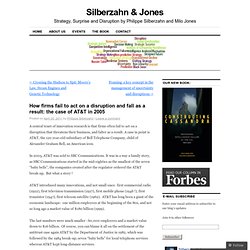

Www.edhec-executive.fr/newsletter/EMI/NL/INSIGHTS4.pdf. La pioche créative: Cartes et Créativité. Ne soyez pas étonné si vous surprenez vos collègues les cartes à la main en pleine journée!

L'erreur serait de les sermonner sur leur attitude car il est fort possible que vous les ayez surpris au milieu d'une session créative. La phase de synthèse créative: son importance clef dans la réussite de l'Innovation. Marc giget. Méthodes agiles : la conception logicielle appliquée au monde physique. Les dispositifs créatifs en questions (1/2) : ce que la créativité libère. Joe Justice présente Wikispeed - Processus agiles dans les entreprises. Innovation method. Bridging Divergence and Convergence - Creative Leadership. Four years or so ago I was sitting at a cafe in Davos Switzerland with two junior executives from GE.

Their main concern seemed to be getting access to a treadmill for their respective senior executives … which is a whole other story in itself. Anyways, we got to talking about the nature of creativity in corporations. They both had gone through the famous Crotonville training facility, which I first learned about in business school, so I was fascinated to hear what they think – especially in an environment famous for championing the whole six sigma thing. One of the junior executives explained it all with a simple drawing that I have re-created above from memory. It went like this: On the one hand you want to make things happen. I asked them, “So does that mean you need a concentration of one type of person versus the other? You need both types of people, and you need to be open that some of them are ambidexterous – they converge just as well as they diverge. Yes, You Can Brainstorm Without Groupthink - Vijay Govindarajan and Jay Terwilliger.
By Vijay Govindarajan and Jay Terwilliger | 6:00 AM July 25, 2012 In articles in both the New York Times and The New Yorker earlier this year, the concept of brainstorming as introduced in the 1940′s by Alex Osborn has been attacked as ineffective and linked to the concept of “Groupthink.”

In her NYT piece and in an HBR ideacast, Susan Cain points out that the popular view — “Lone geniuses are out. The effective FORTH innovation method. Le Modular Design, clé de l’innovation rapide? L’abandon progressif du processus linéaire d’innovation au profit d’une logique d’interactions a conduit depuis une vingtaine d’années à de nouvelles formes d’organisation.

Des fonctions de management de l’innovation ont été créées, avec la redoutable mission d’identifier des axes de développement attractifs, en rupture, tout en faisant foisonner une culture d’innovation dans l’entreprise. Peut-on modéliser l’innovation ? Mais les nouvelles organisations se heurtent à des enjeux de gestion du changement. “Modern and open innovation is about combining science and creativity” by G Garel, Innovation Management Chair at CNAM (2/2) Gilles Garel is tenured professor of the Chair of Innovation Management at the Conservatoire National des Arts et Métiers and professor with teaching responsibilities at the Ecole polytechnique.

Gilles talked in the first part of this interview about the characteristics of modern innovation management: intensive, open, and designing objects with new identities. He comes back here on this notion of “unknown objects”, and foused on innovative approach to design them. Thinking Outside the Innovation Box. If you want your team to think outside the box, you have to create one for them first.

Don’t start an innovation project until you’ve clearly articulated the strategic framework for your team. There are many models out there, here’s one of our favorites. How firms fail to act on a disruption and fall as a result: the case of AT&T in 2005 « Silberzahn & Jones. A central tenet of innovation research is that firms often fail to act on a disruption that threatens their business, and falter as a result.

A case in point is AT&T, the 120 year-old subsidiary of Bell Telephone Company, child of Alexander Graham Bell, an American icon. In 2005, AT&T was sold to SBC Communications. It was in a way a family story, as SBC Communications started in the mid-eighties as the smallest of the seven “baby bells”, the companies created after the regulator ordered the AT&T break-up. But what a story ! AT&T introduced many innovations, and not small ones: first commercial radio (1922), first television transmission (1927), first mobile phone (1946 !) The last numbers were much smaller : 60,000 employees and a market value down to $16 billion. But the end of the AT&T icon is probably more related to the inability to cope with disruptions than pure regulatory matters, and it’s been a location for a quite unusual story: the ODD group. Life of ODDsters was not easy. Manuel de créativité.
Innovation - Études économiques - DGCIS : Prospective, études économiques et évaluation. Les cahiers de l’innovation. 7 Strategies for Generating Ideas. How do organizations come up with new ideas?

And how do they use those ideas to create successful new products, services, businesses, and solutions? To answer these questions, a team of researchers from Rensselaer Polytechnic Institute in New York spent time observing radical innovation projects such as IBM’s silicon-germanium devices, GE’s digital X-ray, GM’s hybrid vehicles, and DuPont’s biodegradable plastics. Their key finding? Most of the ideas behind these projects came from “happy accidents” rather than some ongoing process to generate ideas.
In more than a few cases, individuals or small groups were simply “freelancing,” working on ideas on their own initiative rather than being directed by some “new venture” board or other idea management system. “Almost without exception, these idea-generation methods have been applied sporadically, rather than systematically, continuously, and strategically,” the Rensselaer researchers concluded. Fortifying the Idea Factory. 9 leçons d’innovation. Quelles sont les vôtres ? A lire sur le blog de Greg Satell, "5 principes d'innovation".

L'exercice est classique mais toujours efficace pour remettre de l'ordre dans ses idées et ouvrir des conversations. J'en ai rajouté 4. Six Thinking Hats (Six Chapeaux de la Pensée Rationnelle) (de Bono) La technique des Six Chapeaux de la Pensée Rationnelle (SCPR) ou Six Thinking Hats (STH) d'Edouard de Bono est un modèle qui peut être utilisé pour explorer différentes perspectives vers une situation ou un enjeu complexe.

Voir les choses de diverses manières est souvent une bonne idée dans la formation de la stratégie ou des processus décisionnels complexes. La technique de SCPR est conçue pour aider les individus délibérément à explorer une variété de perspectives sur un sujet qui peut être très différent de celui qu'ils pourraient le plus naturellement assumer. En portant un chapeau de pensée particulier, les personnes jouent des rôles, ou « comme si » eux-mêmes étaient dans une perspective particulière. Par exemple, on peut jouer l'avocat de diable, même si c'est seulement pour générer la discussion. Méthode des six chapeaux.
Un article de Wikipédia, l'encyclopédie libre. Pour cela, chaque participant prend un « chapeau » d'une couleur particulière, lui assignant ou lui reconnaissant un rôle. Ce chapeau peut changer durant la réunion. Il peut aussi être identique à celui d'autres participants. Shanzhai : le modèle d’innovation à la chinoise (cc Assises de l’Intelligence Stratégique) How to Think Creatively - Tony Schwartz. By Tony Schwartz | 8:00 AM November 14, 2011 I grew up hungry to do something creative, to set myself apart. I also believed creativity was magical and genetically encoded.
As early as the age of 8, I began sampling the arts, one after another, to see if I’d inherited some gift. Eventually, I became a journalist. For many years, I told other people’s stories. The first hint I might have sold myself short came in the mid-1990s. When Edwards peered down at the self-portrait I had drawn on the first day, she smiled. From an early age, we’re taught in school to develop the logical, language-based, rational capacities of the left hemisphere of our brain, which is goal-oriented and impatient to reach conclusions. The left hemisphere gives names to objects in order to reduce and simplify them.
The right hemisphere, by contrast, is visual rather than verbal.
Triz.